Pumpkins, with their vibrant colors and versatile uses, have become a symbol of autumn and harvest season.
Whether they’re destined for pie filling, decorative displays, or spooky jack-o’-lanterns, pumpkins require specific climates and growing conditions to thrive.
Understanding these requirements is crucial for successful pumpkin cultivation.
In this blog post, we will delve into the fascinating world of pumpkins and explore the climate, soil, sunlight, water, and other important considerations for their optimal growth.
So, let’s embark on a journey to unlock the secrets of pumpkin cultivation!
Climate And Growing Conditions Do Pumpkins Require?
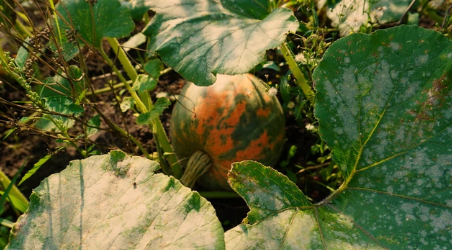
Growing Conditions Do Pumpkins
Pumpkins belong to the Cucurbitaceae family and are warm-season crops that thrive in specific climate conditions.
The ideal temperature range for pumpkins lies between 75°F and 85°F (24°C and 29°C) during the day and 60°F and 70°F (15°C and 21°C) at night.
High temperatures above 90°F (32°C) can negatively affect fruit set and development.
Pumpkins require a long growing season of approximately 75 to 100 days, depending on the variety.
Therefore, regions with shorter summers may necessitate starting seeds indoors or selecting faster-maturing varieties.
Also, the average rainfall during the growing season should be around 20 to 30 inches (50 to 75 cm) evenly distributed, ensuring that the plants receive sufficient moisture.
Soil Requirements

What Climate And Growing Conditions Do Pumpkins Require
Choosing the right soil is vital for the healthy development of pumpkin plants.
They thrive in well-draining, loamy soil that is rich in organic matter. Prior to planting, it’s advisable to prepare the soil by incorporating compost or well-rotted manure to improve its fertility and structure.
Pumpkins prefer a slightly acidic to neutral soil pH range of 6.0 to 7.0. Conducting a soil test can help determine the pH and nutrient levels, allowing gardeners to make appropriate amendments if necessary.
Adequate drainage is crucial to prevent waterlogging, which can lead to root rot and other diseases. Raised beds can be beneficial in poorly draining soils.
Sunlight Requirements
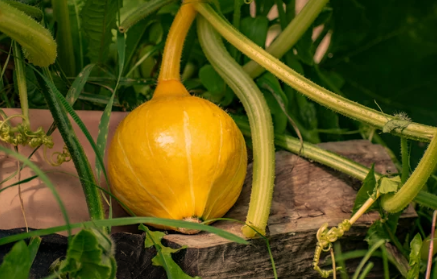
Pumpkins are sun-loving plants that require at least 6 to 8 hours of direct sunlight per day.
When selecting a planting location, choose a spot that receives maximum sun exposure.
The ample sunlight helps the plants produce energy through photosynthesis, ensuring healthy foliage growth and optimal fruit development.
It’s worth noting that pumpkins have a sprawling growth habit, with vines extending several feet in all directions.
Therefore, it’s crucial to provide ample space and avoid planting them in the shade of taller plants or structures that may obstruct sunlight access.
Watering Needs
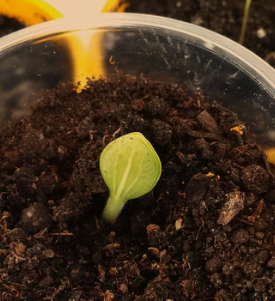
Proper watering practices play a crucial role in pumpkin cultivation. While they require regular watering, it’s important to strike a balance and avoid overwatering.
Pumpkins prefer moist soil, but waterlogged conditions can promote disease development and hinder root growth.
During dry spells, water the plants deeply, ensuring that the soil is evenly moist.
Applying mulch around the base of the plants helps retain soil moisture and suppress weed growth.
Also, it’s advisable to water the plants at the base rather than overhead to minimize the risk of foliage diseases.
Pollination and Bee Activity
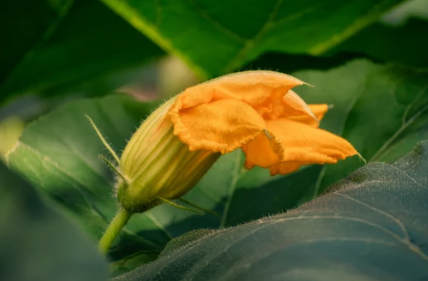
Pumpkins have separate male and female flowers, and successful pollination is crucial for fruit development.
Bees, especially native pollinators, play a vital role in transferring pollen from male to female flowers.
To attract bees, consider planting flowers or setting up bee-friendly habitats nearby.
To enhance pollination success, you can manually transfer pollen from male flowers to female flowers using a small brush or cotton swab.
Gently brushing the inside of the male flower to collect the pollen and then applying it to the center of the female flower increases the chances of fruit set.
Pest and Disease Management
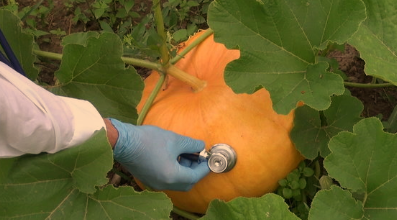
Pumpkin plants can be susceptible to various pests and diseases, including squash bugs, cucumber beetles, powdery mildew, and bacterial wilt. Implementing proper pest and disease management practices is essential to protect the plants.
Regular monitoring of the plants for signs of pests or diseases is important. Integrated pest management strategies, such as handpicking pests, using insecticidal soaps or organic insecticides, and practicing crop rotation, can help control pest populations.
Proper spacing and providing good air circulation around the plants can reduce the risk of diseases.
Conclusion
Cultivating pumpkins successfully relies on providing the right climate and growing conditions while managing pests and diseases.
Knowing their temperature preferences, soil requirements, sunlight needs, watering practices, and considerations for pollination and pest management, gardeners can create an environment conducive to healthy pumpkin growth.
Whether you’re a backyard enthusiast or a commercial farmer, implementing these guidelines will help you grow bountiful pumpkins that are ready for autumn festivities, culinary delights, and festive decorations.
So, embrace the pumpkin-growing adventure and enjoy the rewards of your labor!
Reference
- Masabni, J. 2020. Growing pumpkins and winter squash. Texas A&M AgriLife Extension. Available at: https://agrilifeextension.tamu.edu/library/gardening/growing-pumpkins-and-winter-squash/
- Oelke, E.A., E.S. Oplinger, and D.H. Putnam. 1989. Pumpkin. Alternative Field Crops Manual. University of Wisconsin-Extension. Available at: https://hort.purdue.edu/newcrop/afcm/pumpkin.html



